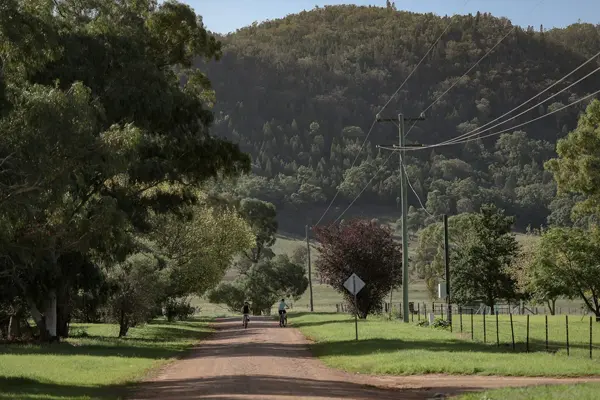
Indigenous stories behind iconic landmarks
Australia is home to some of the world’s most iconic landmarks, from the towering Uluru to the stunning Great Barrier Reef. However, beyond their natural beauty and awe-inspiring features, these landmarks hold deep cultural significance for Australia’s Indigenous peoples. For thousands of years, the land has been shaped by the stories, traditions, and spirituality of the First Nations people. Let’s explore the Indigenous stories behind some of Australia’s most famous natural landmarks.
1. Uluru: The Heart of the Anangu People
Uluru, often referred to as Ayers Rock, is one of Australia’s most recognizable landmarks. Located in the heart of the Northern Territory, it holds immense spiritual significance for the Anangu people, the traditional custodians of the land. According to Anangu mythology, Uluru is the result of a creation story involving ancestral beings who shaped the landscape. These beings, known as Tjukurpa, are believed to have created the rock as part of a broader creation narrative that connects the land, the people, and their ancestors. The rock itself is considered sacred, and its numerous caves, waterholes, and crevices are believed to be the resting places of these ancestral beings.
The Anangu people have cared for Uluru for generations, passing down stories and traditions that connect them to the land. While visitors are drawn to the iconic monolith for its beauty, it is crucial to respect its cultural importance by refraining from climbing the rock, as the Anangu ask that it be left undisturbed.
2. The Twelve Apostles: Stories of Creation and the Sea
The Twelve Apostles, a group of limestone stacks along the Great Ocean Road in Victoria, are one of Australia’s most photographed natural attractions. However, for the Gunditjmara people, the area is steeped in rich history and ancient stories. According to local Indigenous mythology, the Twelve Apostles were created by the spirit ancestors during the Dreaming, a period when the world was formed. The rugged coastline and the towering stacks are said to have been shaped by the movements of these ancestral spirits as they traversed the land and sea.
The Gunditjmara people also have a deep connection to the region’s waterways, particularly Lake Condah and its eel traps. The Twelve Apostles stand as a reminder of the spiritual connection between the people and the land, reflecting the Gunditjmara’s enduring relationship with the environment.
3. Kata Tjuta: The Sacred Olgas
Kata Tjuta, meaning “many heads” in the local Pitjantjatjara language, is a group of large, domed rock formations located near Uluru. For the local Anangu people, Kata Tjuta is another sacred site rich in cultural significance. The rock formations are believed to be the physical embodiment of ancestral beings who traveled across the land, leaving behind their marks in the landscape. According to Anangu tradition, the area is connected to the creation story of the Tjukurpa, which also involves Uluru. The domes of Kata Tjuta are seen as the resting places of these spiritual beings, and the area is considered an important site for ceremonies and rites of passage.
4. The Bunjil's Cave: A Symbol of Creation
Bunjil’s Cave, located in the Grampians National Park in Victoria, is a significant site for the Gunditjmara and Wotjobaluk people. The cave is adorned with ancient rock art depicting Bunjil, a giant eagle that is an important figure in many Indigenous creation stories. Bunjil is often seen as a creator deity, responsible for shaping the world and guiding the people. The cave, along with the surrounding landscape, is a sacred space where the stories of Bunjil’s creation and the land are passed down through generations.
5. The Great Barrier Reef: The Dreaming of Baiame
The Great Barrier Reef, one of the most diverse ecosystems on the planet, is not only a natural wonder but also a place of deep cultural significance for the Indigenous peoples of the region. The Gooreng Gooreng, Wuthathi, and Kuku Yalanji people, among others, have a long history of connection to the reef. According to their creation stories, Baiame, the creator god, played a key role in the formation of the reef. Baiame is believed to have shaped the land, the sea, and the creatures that inhabit it, including the fish and marine life found in the reef. For these Indigenous communities, the reef is not just a place of beauty but a living, breathing entity that is intimately tied to their spiritual and cultural identity.
Conclusion
The iconic landmarks of Australia are more than just natural wonders; they are deeply embedded in the cultural fabric of the nation’s Indigenous peoples. These sites are integral to the Dreaming, a central aspect of Indigenous belief systems, and carry stories that connect the land, people, and ancestors. By understanding and respecting the Indigenous stories behind these landmarks, we can gain a deeper appreciation for the rich cultural heritage that has shaped Australia for millennia. As we visit these places, it is essential to acknowledge their significance and ensure their preservation for future generations.
Subscribe